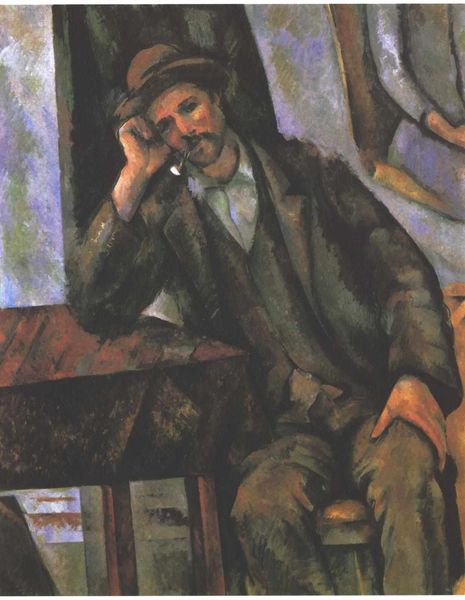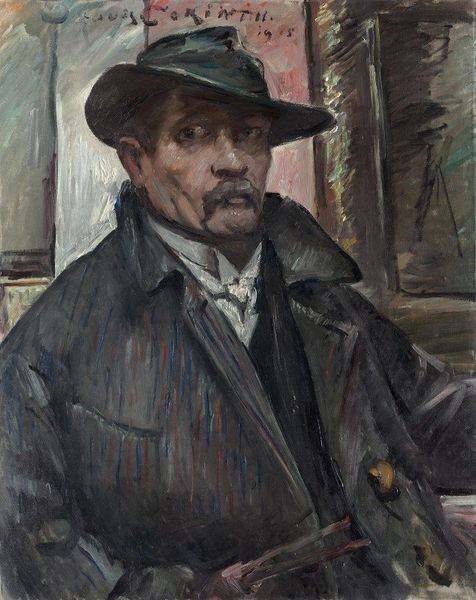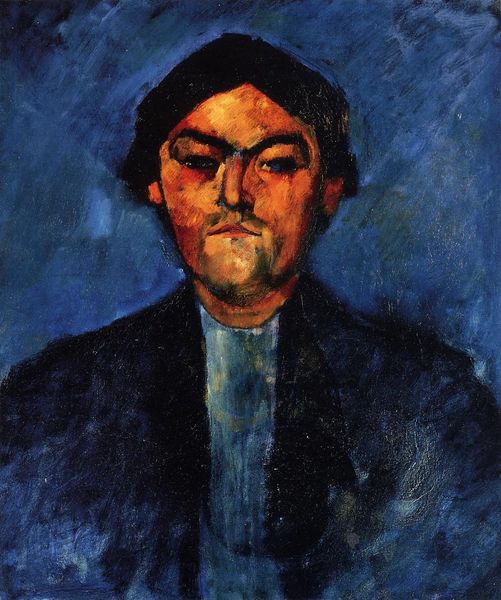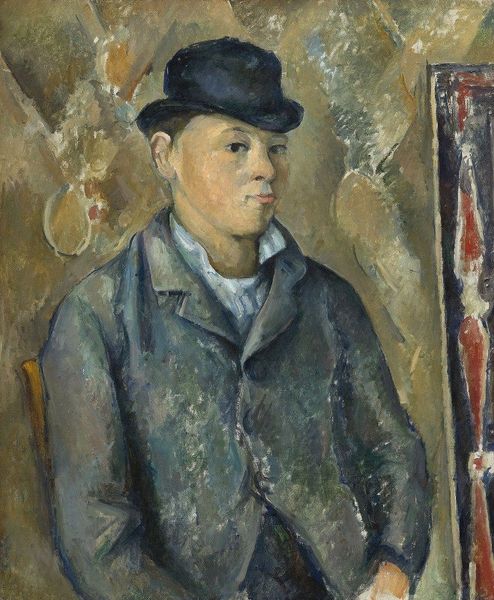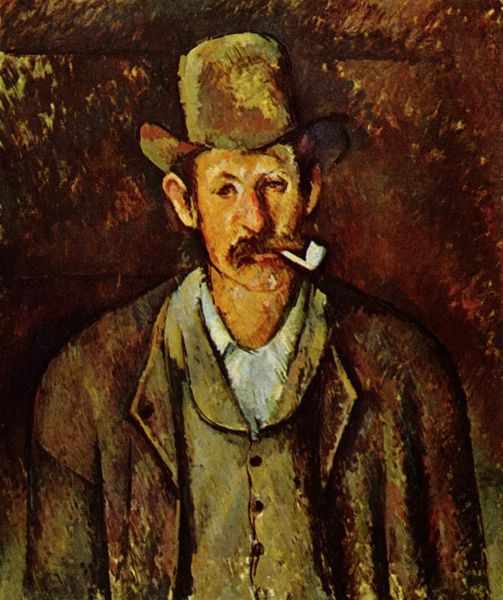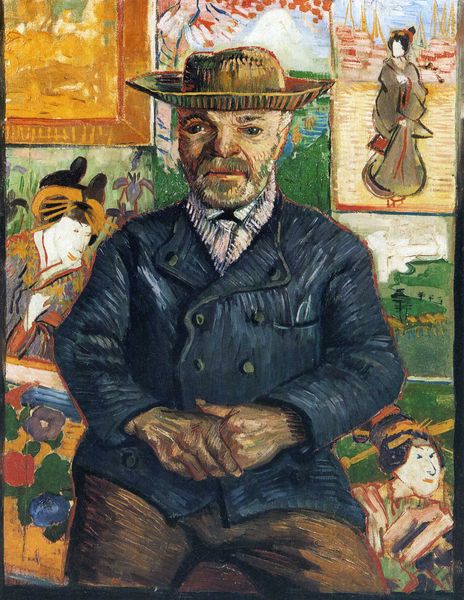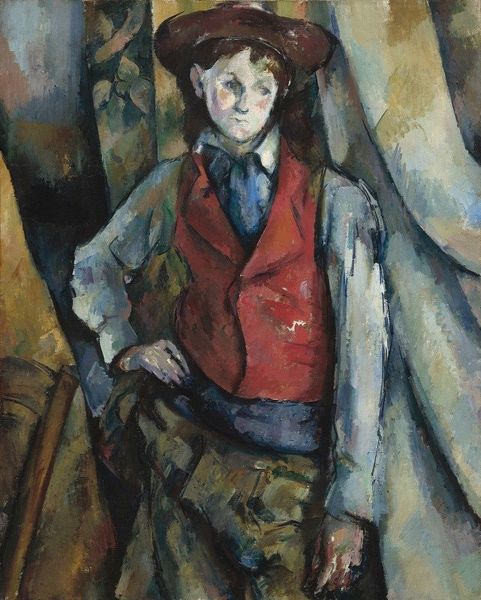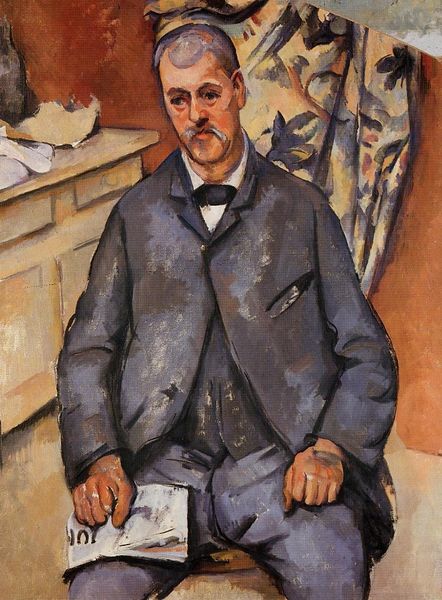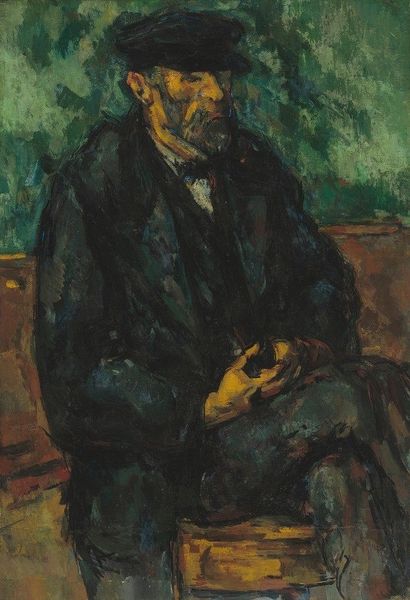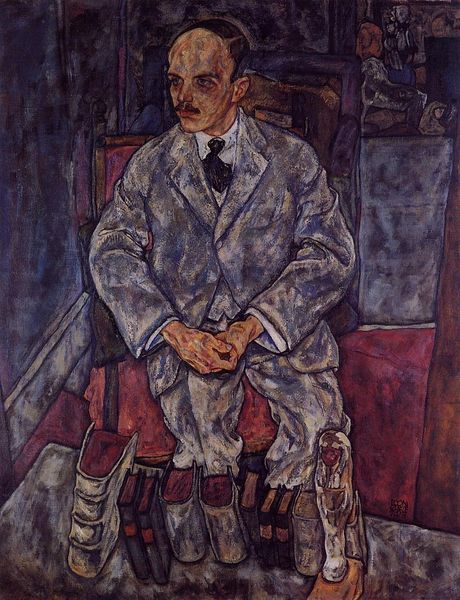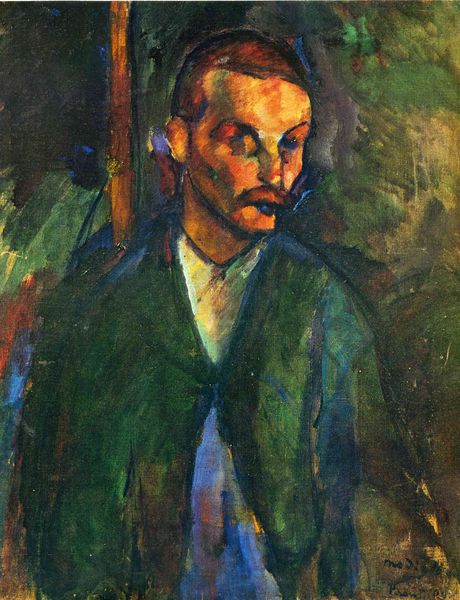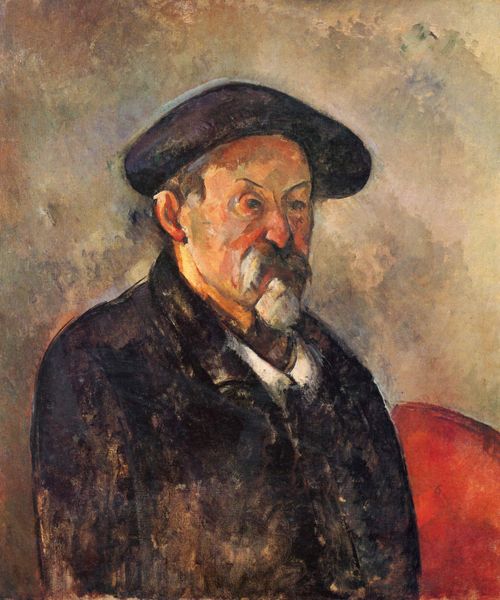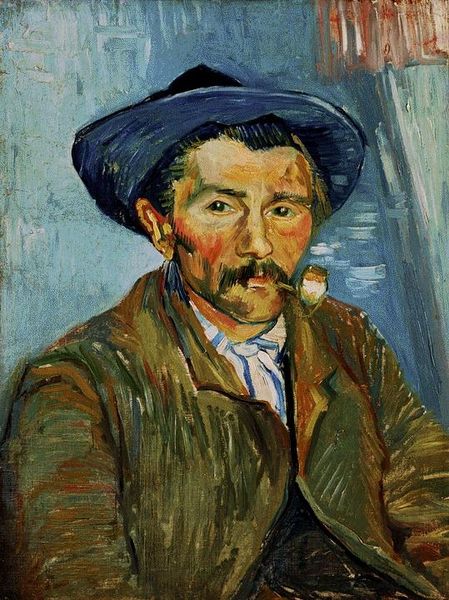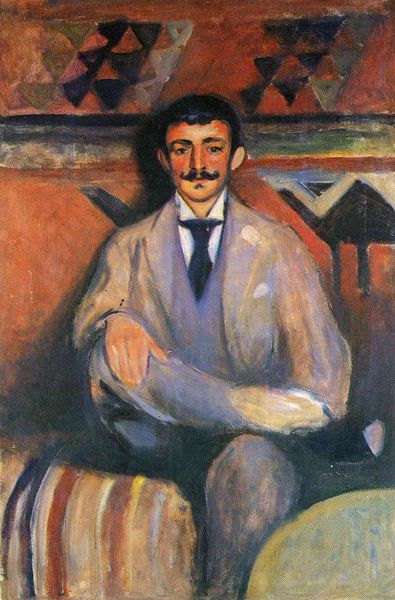
painting, oil-paint, impasto
#
portrait
#
figurative
#
painting
#
oil-paint
#
figuration
#
oil painting
#
impasto
#
genre-painting
#
post-impressionism
Copyright: Public Domain: Artvee
Curator: Standing before us is Paul Cézanne's "Man in a Blue Smock," oil on canvas, likely painted around 1896 or 1897. Note the visible brushstrokes, typical of Cézanne’s distinct post-impressionist style. Editor: My initial impression? I feel an incredible sense of serenity. Even though the brushstrokes are quite vigorous, the overall effect is tranquil, meditative almost. Like he’s just waiting. Curator: That feeling comes, in part, from Cézanne's approach to composition. The figure is stable, grounded. Notice how he employs patches of colour rather than continuous lines, building form through juxtaposed planes. There’s a real structural intelligence at play here. Editor: The blue is doing a lot of work, I think. The various tones—the deep indigo of his smock, the lighter, airy blue of the background—give the impression of space but without defining it too clearly. It almost dissolves around him. Makes you wonder, who was this guy, this 'man in a blue smock'? Curator: We don't know his identity with certainty, which shifts our focus from the representational to the formal aspects of the painting. Observe, for instance, the relationship between the vibrant red scarf and the cooler blues and browns; a subtle but potent contrast. Editor: Yeah, that red really pops! Adds that touch of, uhm, groundedness. He's in the middle of the painting, with that small scarf that keeps me in the scene, as if a friend just passed by. What do you think the story there is? Is he a fisherman, a shopkeeper taking a break? You just get a sense he lives somewhere. Curator: What captivates me is the pure aesthetic challenge Cézanne set for himself. This isn't just a portrait; it's an investigation into form, colour, and the very act of seeing. The painting refuses a straightforward reading, challenging us to engage with it on a deeper, more perceptual level. Editor: Absolutely! It’s not a simple, mimetic likeness. But, for me, it stirs something beyond the surface; this unknown man becomes every man, every soul quietly observing the world around him. This man is all of us. And that’s the point, I think. Curator: Indeed. Cézanne prompts us to ponder, not merely perceive, reminding us that the essence of art lies not just in depiction, but in its power to reveal the underlying structures of our visual world.
Comments
No comments
Be the first to comment and join the conversation on the ultimate creative platform.
